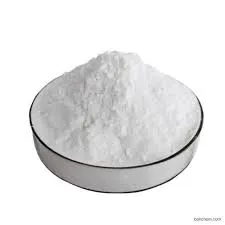- Afrikaans
- Albanian
- Amharic
- Arabic
- Armenian
- Azerbaijani
- Basque
- Belarusian
- Bengali
- Bosnian
- Bulgarian
- Catalan
- Cebuano
- Corsican
- Croatian
- Czech
- Danish
- Dutch
- English
- Esperanto
- Estonian
- Finnish
- French
- Frisian
- Galician
- Georgian
- German
- Greek
- Gujarati
- Haitian Creole
- hausa
- hawaiian
- Hebrew
- Hindi
- Miao
- Hungarian
- Icelandic
- igbo
- Indonesian
- irish
- Italian
- Japanese
- Javanese
- Kannada
- kazakh
- Khmer
- Rwandese
- Korean
- Kurdish
- Kyrgyz
- Lao
- Latin
- Latvian
- Lithuanian
- Luxembourgish
- Macedonian
- Malgashi
- Malay
- Malayalam
- Maltese
- Maori
- Marathi
- Mongolian
- Myanmar
- Nepali
- Norwegian
- Norwegian
- Occitan
- Pashto
- Persian
- Polish
- Portuguese
- Punjabi
- Romanian
- Russian
- Samoan
- Scottish Gaelic
- Serbian
- Sesotho
- Shona
- Sindhi
- Sinhala
- Slovak
- Slovenian
- Somali
- Spanish
- Sundanese
- Swahili
- Swedish
- Tagalog
- Tajik
- Tamil
- Tatar
- Telugu
- Thai
- Turkish
- Turkmen
- Ukrainian
- Urdu
- Uighur
- Uzbek
- Vietnamese
- Welsh
- Bantu
- Yiddish
- Yoruba
- Zulu
Pro . 21, 2024 11:22 Back to list
ivermectin injection dosage for sheep
Ivermectin Injection Dosage for Sheep A Comprehensive Guide
Ivermectin is a widely used antiparasitic drug in veterinary medicine, particularly for sheep and other livestock. It acts primarily against a range of internal and external parasites, including roundworms, lice, and mites. Understanding the proper dosage and administration of ivermectin is crucial for ensuring effective treatment while minimizing the risk of resistance and adverse effects.
Understanding Ivermectin
Ivermectin belongs to a class of drugs known as macrocyclic lactones. It works by interfering with the nerve and muscle functions of parasites, leading to paralysis and death. It is available in various formulations, including injectables, pour-ons, and oral solutions, but injectable formulations are often preferred for their rapid action and ease of administration in herd settings.
Recommended Dosage
When using ivermectin injection for sheep, the standard dosage is usually around 0.2 mg/kg of body weight. However, it’s essential to consult with a veterinarian for the specific needs of your flock, as individual circumstances may require adjustments in dosage. The injectable form is typically administered subcutaneously (under the skin) in the neck area. For best practice, the following steps should be observed
1. Accurate Weight Estimation It is critical to weigh the sheep accurately before calculating the dosage. Using a scale is the best practice, but if unavailable, estimations based on body condition and size can be made. 2. Calculating the Dose Once the weight is known, multiply it by the recommended dose of 0.2 mg/kg to determine the total amount of ivermectin needed. For example, a sheep weighing 70 kg would require 14 mg of ivermectin.
3. Dilution of Product (if necessary) Depending on the concentration of the ivermectin injection being used, dilution may be necessary. Be sure to follow the manufacturer's guidelines for diluting, if applicable.
4. Administration Technique Use a sterile syringe and needle to draw up the calculated dose. Ensure to change needles between animals to prevent cross-contamination. Inject the ivermectin into the subcutaneous tissue, ensuring that the needle is inserted at a slight angle to avoid hitting muscle tissue.
ivermectin injection dosage for sheep

Timing and Frequency
Ivermectin can often be administered as a single dose; however, in cases of heavy infestations or persistent exposure to parasites, repeat treatments may be necessary. The typical interval between treatments can vary but often ranges from 2 to 4 weeks, depending on the level of reinfestation and the type of parasites being targeted. Additionally, when introducing new sheep into the flock, it’s advisable to administer ivermectin as a preventive measure against parasites.
Safety and Precautions
When using ivermectin, it’s vital to be aware of potential side effects. Most sheep tolerate ivermectin well, but paradoxically, there are instances of adverse reactions, particularly in sensitive breeds or those with pre-existing health issues. Signs of side effects may include lethargy, uncoordinated movements, or gastrointestinal upset. If any of these occur, veterinary assistance should be sought promptly.
Resistance Management
One of the significant concerns with the use of ivermectin and other antiparasitic drugs is the development of resistance. To minimize the risk, it’s advisable to rotate dewormers and use them in conjunction with good management practices, such as regular fecal testing to monitor parasite loads, maintaining proper sanitation, and managing pasture rotation to prevent reinfestation.
Conclusion
In conclusion, using ivermectin injections for sheep can effectively manage parasitic infections when done correctly. Proper dosing and administration, along with good herd management practices, can help maintain the health of the flock and minimize the potential for drug resistance. Always consult with a veterinarian to tailor a treatment plan that fits the unique needs of your sheep. By staying informed and proactive, sheep producers can ensure the ongoing health and productivity of their livestock.
-
Guide to Oxytetracycline Injection
NewsMar.27,2025
-
Guide to Colistin Sulphate
NewsMar.27,2025
-
Gentamicin Sulfate: Uses, Price, And Key Information
NewsMar.27,2025
-
Enrofloxacin Injection: Uses, Price, And Supplier Information
NewsMar.27,2025
-
Dexamethasone Sodium Phosphate Injection: Uses, Price, And Key Information
NewsMar.27,2025
-
Albendazole Tablet: Uses, Dosage, Cost, And Key Information
NewsMar.27,2025













